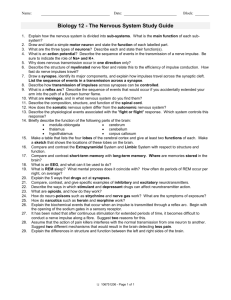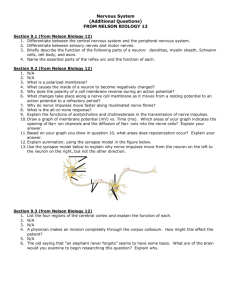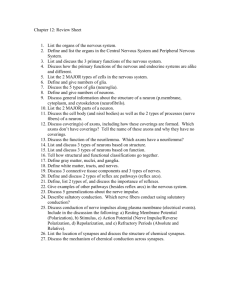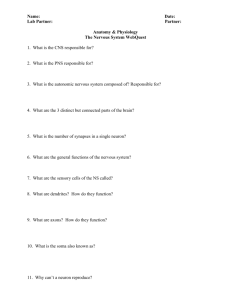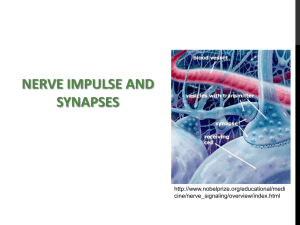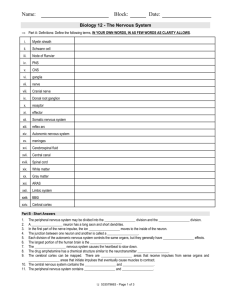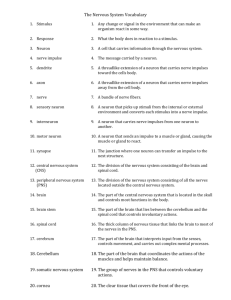The Nervous System Vocabulary BINGO
advertisement
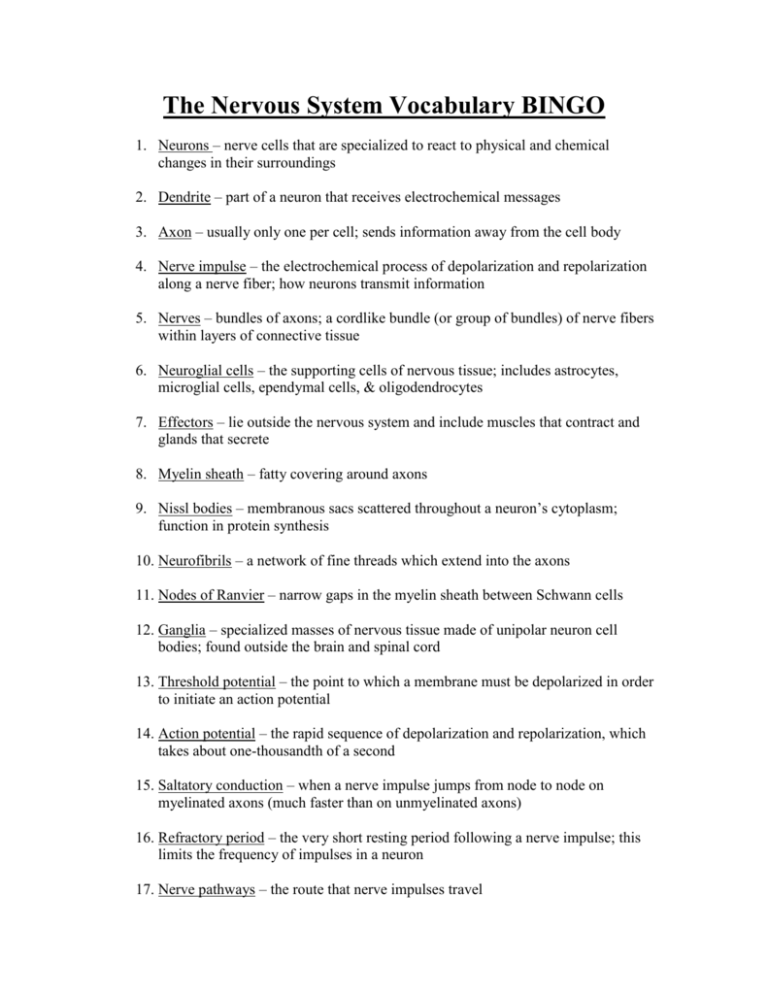
The Nervous System Vocabulary BINGO 1. Neurons – nerve cells that are specialized to react to physical and chemical changes in their surroundings 2. Dendrite – part of a neuron that receives electrochemical messages 3. Axon – usually only one per cell; sends information away from the cell body 4. Nerve impulse – the electrochemical process of depolarization and repolarization along a nerve fiber; how neurons transmit information 5. Nerves – bundles of axons; a cordlike bundle (or group of bundles) of nerve fibers within layers of connective tissue 6. Neuroglial cells – the supporting cells of nervous tissue; includes astrocytes, microglial cells, ependymal cells, & oligodendrocytes 7. Effectors – lie outside the nervous system and include muscles that contract and glands that secrete 8. Myelin sheath – fatty covering around axons 9. Nissl bodies – membranous sacs scattered throughout a neuron’s cytoplasm; function in protein synthesis 10. Neurofibrils – a network of fine threads which extend into the axons 11. Nodes of Ranvier – narrow gaps in the myelin sheath between Schwann cells 12. Ganglia – specialized masses of nervous tissue made of unipolar neuron cell bodies; found outside the brain and spinal cord 13. Threshold potential – the point to which a membrane must be depolarized in order to initiate an action potential 14. Action potential – the rapid sequence of depolarization and repolarization, which takes about one-thousandth of a second 15. Saltatory conduction – when a nerve impulse jumps from node to node on myelinated axons (much faster than on unmyelinated axons) 16. Refractory period – the very short resting period following a nerve impulse; this limits the frequency of impulses in a neuron 17. Nerve pathways – the route that nerve impulses travel 18. Synapse – the junction between any two communicating neurons 19. Presynaptic neuron – Sender; the neuron carrying the impulse into the synapse 20. Postsynaptic neuron – Receiver; the neuron that receives the input at the synapse 21. Neurotransmitter – the chemical that an axon end secretes on an effector (muscle or gland) or another neuron 22. Synaptic knobs – the distal ends of axons; contain many membranous sacs (synaptic vesicles) which release neurotransmitters 23. Reflex – automatic, subconscious response to changes (stimuli) within or outside the body; helps to maintain homeostasis 24. Meninges – membranes located between the bone and soft tissues of the nervous system; help to protect the brain and spinal cord; consists of 3 layers: dura mater, arachnoid layer, and the pia mater 25. Ascending tracts – tracts that carry sensory information to the brain 26. Descending tracts – tracts that conduct motor impulses from the brain to muscles and glands 27. Ventricles – a series of interconnected cavities within the brain that contain cerebrospinal fluid 28. Convolutions– (gyri); the ridges on the surface of the cerebrum; separated by grooves 29. Choroid plexuses – tiny, reddish, cauliflower-like masses of specialized capillaries in the pia mater that secrete cerebrospinal fluid 30. Cauda equina – (horse’s tail); formed by the extension of the lumbar, sacral, and coccygeal nerves beyond the end of the spinal cord 31. Plexus – a network of interlaced nerves 32. Addiction – a physical or psychological dependence in which a user is preoccupied with locating and taking a drug 33. Drug abuse – the chronic self-administration of a drug in doses high enough to cause addiction



